 |
 |
 |
| |
B/F/TAF for 48 Weeks in US Group With Substance Use and Other Challenges
|
| |
| |
Mark Mascolini
IDWeek 2022, October 19-23, 2022, Washington, DC
Almost half of 43 people with substance use disorder-and often with unstable housing and minimal or no health insurance-reached and maintained a viral load below 50 copies for 48 weeks in an open-label, single-center trial of bictegravir/emtricitabine/tenofovir alafenamide (B/F/TAF) at the University of Nebraska Medical Center [1]. Methamphetamine use, a problem for almost all these people, generally decreased through 48 weeks of treatment.
University of Nebraska researchers who conducted this trial noted that nearly half of HIV-positive people in the United States face substance use problems. Because antiretroviral adherence challenges many substance users, clinicians try to prescribe a regimen with a high barrier to resistance, such as those including a second-generation integrase inhibitor or a boosted protease inhibitor. Protease inhibitors often interact with illicit drugs, so these researchers opted to test B/F/TAF, a once-daily, single-pill regimen anchored on the integrase inhibitor bictegravir that has not been tested formally in people with substance use disorder.
This single-center, open-label trial enrolled people older than 19 years with ongoing substance use disorder including any illicit substance use within 6 months [2]. They could be antiretroviral naive or experienced, needed a viral load above 1000 copies and creatinine clearance above 30 mL/min, and could have no integrase inhibitor- or TAF-related resistance mutations. Participants could have the M184V mutation and thymidine analog mutations. The primary endpoint was the proportion of people with a viral load below 50 copies at week 48 in an FDA snapshot, intention-to-treat exposed analysis.
The study group included 12 antiretroviral-naive and 31 experienced people with median ages of 32 and 40 years. Thirty-four participants were men and 9 women, 35 white, 6 black, 2 Native American, and 7 Hispanic. Twenty people did not have stable housing, 24 had no medical insurance or relied on ADAP, while 9 used Medicaid and 5 Medicare. Forty-one of these 43 people used stimulants/methamphetamine, 9 used cocaine, 7 opiates/heroin, and 4 sedatives.
Median viral load stood at 55,800 copies (range 1212 to 2,280,000) and median CD4 count at 460 (range 40 to 1653). Nineteen people had any genotypic antiretroviral resistance, including 12 with nonnucleoside mutations, 5 with M184V/I, and 1 with protease inhibitor mutations. Twenty-two people had already used an integrase inhibitor and 9 a protease inhibitor.
At 24 weeks 32 people (74%) had a viral load below 50 copies, 5 had a load above 50 copies, and 6 had no data. At 48 weeks 21 people (49%) had a viral load below 50 copies, 10 had a load above 50 copies, and 12 had no data. At week 48 there were 7 confirmed virologic failures with viral loads ranging from 94 to 69,500 copies. Among 3 repeat viral loads at week 48, 1 was below 20 copies, 1 was 202 copies, and 1 was 3410 copies. Five of 7 people with virologic failure were lost to follow-up (stopped keeping appointments), 1 had a new M184V resistance mutation, and the 1 with a repeat viral load below 20 copies was considered resuppressed.
At week 48 dried blood spot concentrations of tenofovir-diphosphate (the active form of TAF) were significantly higher in people with a viral load below versus above 50 copies (P = 0.008). The same was true for emtricitabine-triphosphate, the active form of emtricitabine (P = 0.003). These findings suggest imperfect adherence in people with a detectable viral load.
Sixteen trial participants (37%) had 27 grade 3 or worse serious adverse events. Five people (12%) had suicidal thoughts attributed to methamphetamine. No serious adverse events could be attributed to study drugs or led people to stop taking B/F/TAF. NIDA-ASSIST scores-based on a series of questions that help clinicians identify risky substance use in adults [3]-indicated reduced use of methamphetamine during the trial.
The University of Nebraska team concluded that a high-risk HIV group with ongoing substance use tolerated B/F/TAF well and that half of this group-probably those who could maintain good antiretroviral adherence-attained and maintained a viral load below 50 copies through 48 weeks.
References
1. Havens JP, Bares SH, Lyden E, et al. B/F/TAF in HIV-infected adults with substance use disorders: BASE study, week 48 results. IDWeek 2022, October 19-23, 2022, Washington, DC. Abstract 1258.
2. ClinicalTrials.gov. Bictegravir/emtricitabine/tenofovir alafenamide (B/F/TAF) in HIV-1 infected patients with active illicit substance use (BASE). ClinicalTrials.gov identifier NCT03998176. https://clinicaltrials.gov/ct2/show/NCT03998176
3. NIDA-Modified ASSIST (NM ASSIST): Clinician's Screening Tool for Drug Use in General Medical Settings. https://www.samhsa.gov/resource/ebp/nida-modified-assist-nm-assist-clinicians-screening-tool-drug-use-general-medical
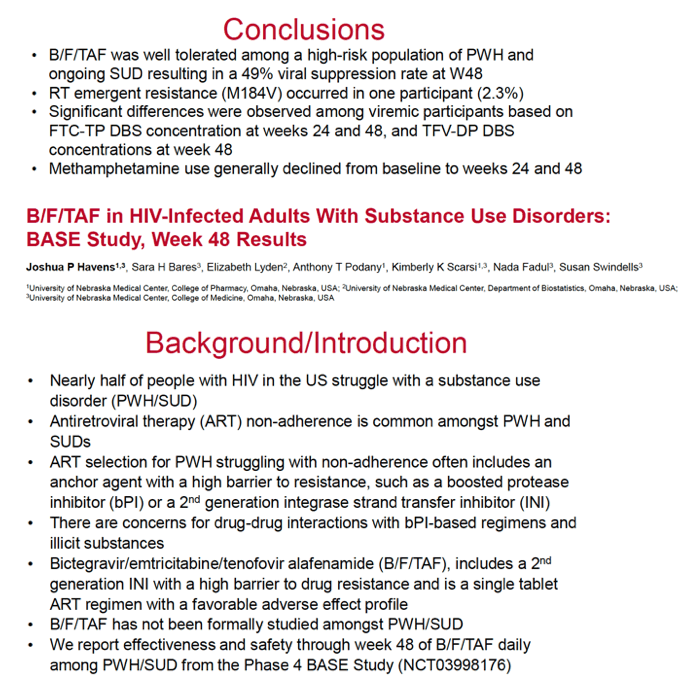
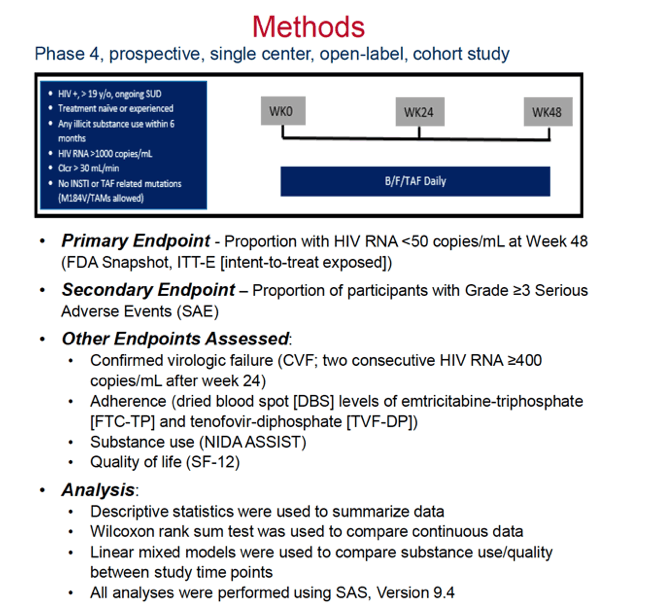
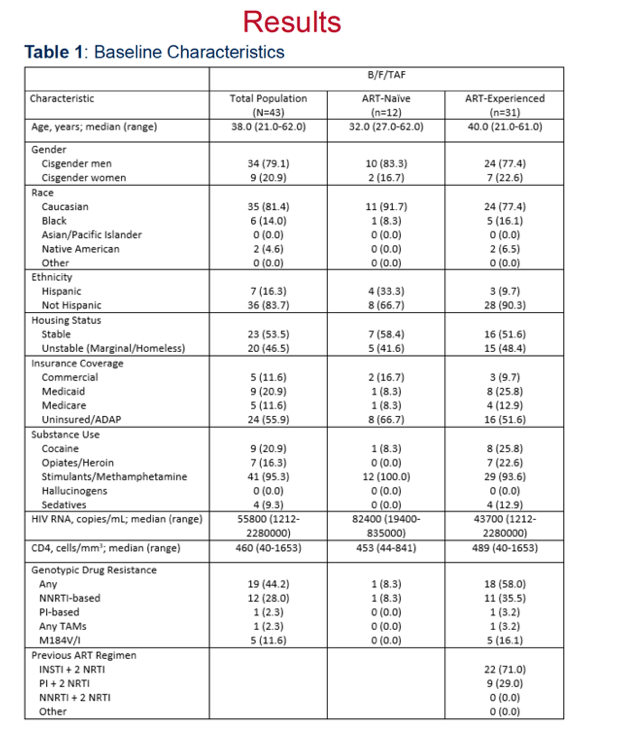
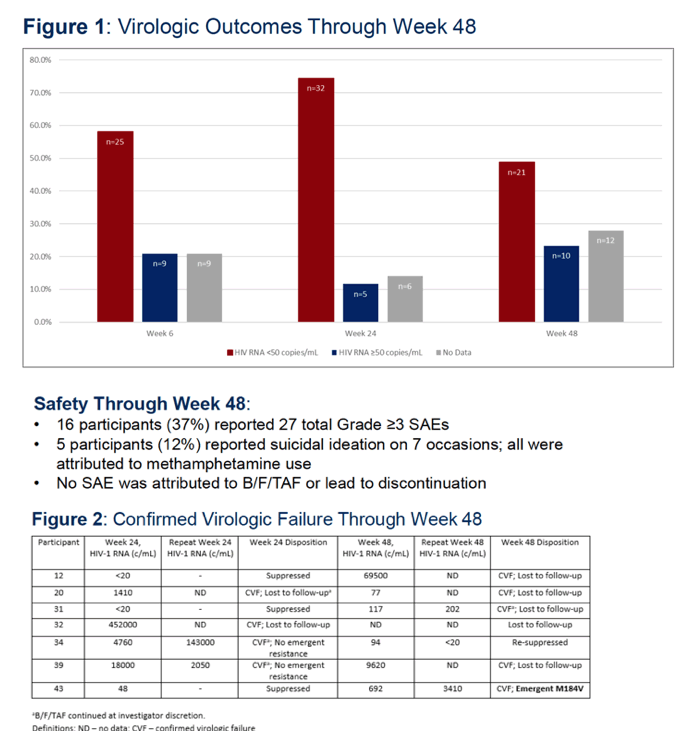
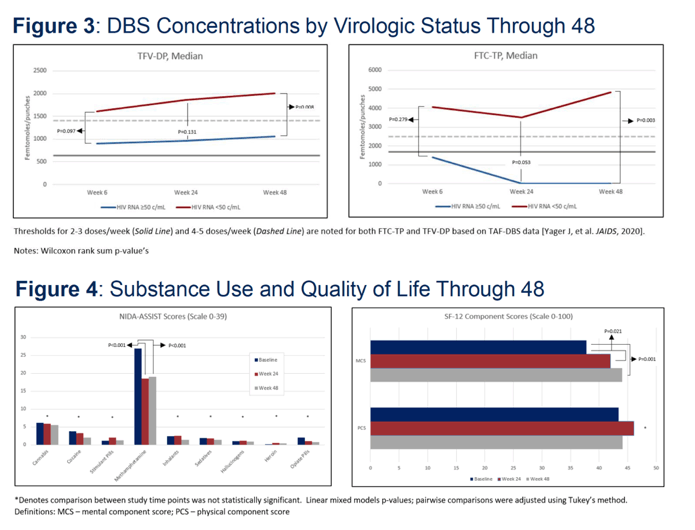
|
| |
|
 |
 |
|
|